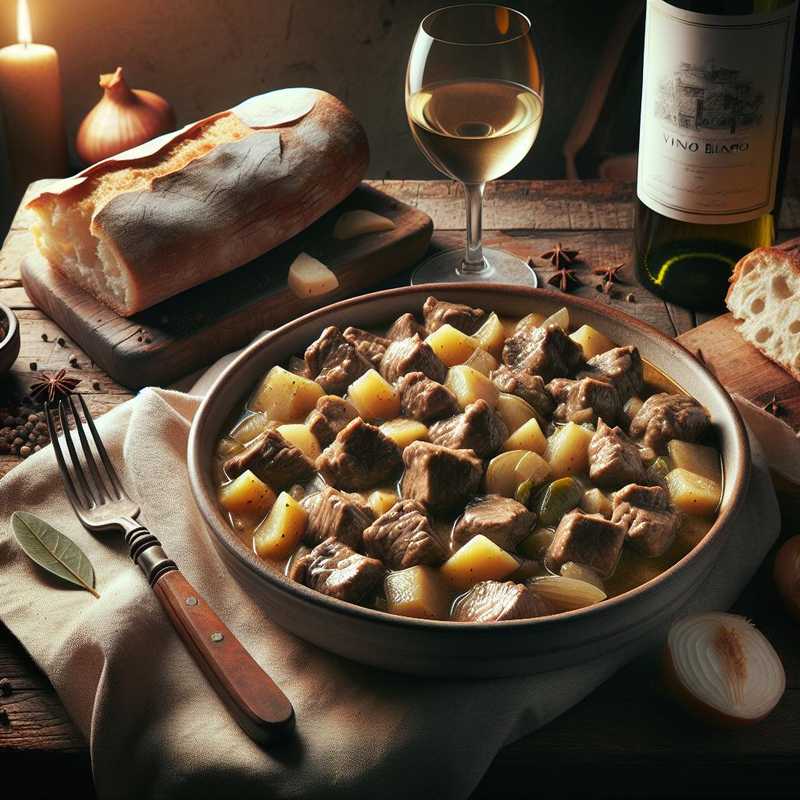White Wine Stew
17/11/2023The white wine stew is a classic home-cooked dish combining the tenderness of braised meat with the aroma of wine. I propose a version enriched with an Italian touch:
Ingredients
- 500g of beef for stewing (such as shoulder or rump)
- 1 medium onion
- 2 carrots
- 2 celery ribs
- 2 cloves of garlic
- 250ml of dry white wine
- 500ml of beef or vegetable broth
- 2 tablespoons of tomato paste
- 3 tablespoons of extra virgin olive oil
- Salt and pepper to taste
- A few sprigs of rosemary or thyme for flavoring (optional)
- Flour, as needed to coat the meat
Preparation
- Start by cleaning and cutting the onion, carrots, and celery into not too small pieces. Mince the garlic cloves finely.
- Lightly flour the pieces of meat, this will help to create a crust during browning and thicken the sauce.
- Put the oil in a large casserole and sauté the garlic and onion until they become translucent.
- Add the floured meat and brown it well on every side until it is nicely golden. It may be necessary to do this in batches to avoid overcrowding the casserole, which would cause the meat to stew instead of browning.
- Once the meat is browned, incorporate the carrots and celery. Let it flavor for a few minutes, stirring occasionally.
- Deglaze with the white wine and let the alcohol evaporate on high heat.
- Add the tomato paste and broth until the meat is completely covered. At this point, also add rosemary or thyme if you have chosen to use them.
- Lower the flame to the minimum, cover with a lid, and cook for at least 2 hours, checking occasionally and adding broth if necessary.
- At the end of cooking, adjust with salt and pepper and if the sauce seems too liquid you can let it reduce over a slightly higher flame for a few minutes with the lid open.
- Serve hot, possibly accompanied by soft polenta or roasted potatoes.
Fun Fact
The stew has ancient origins, and it’s a dish present in many cultures with some local variations. In the Italian version, the use of sautés with vegetables such as onion, carrots, and celery (the classic “soffritto” or “battuto”) is common, which provide a rich and deep flavor base to the dish.
